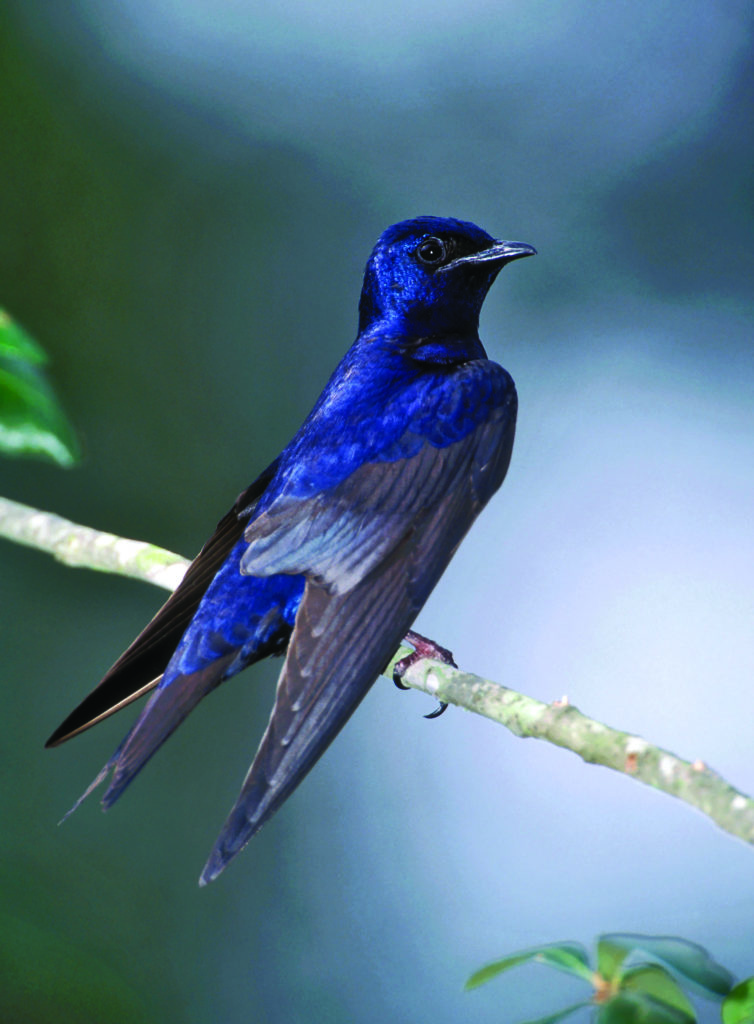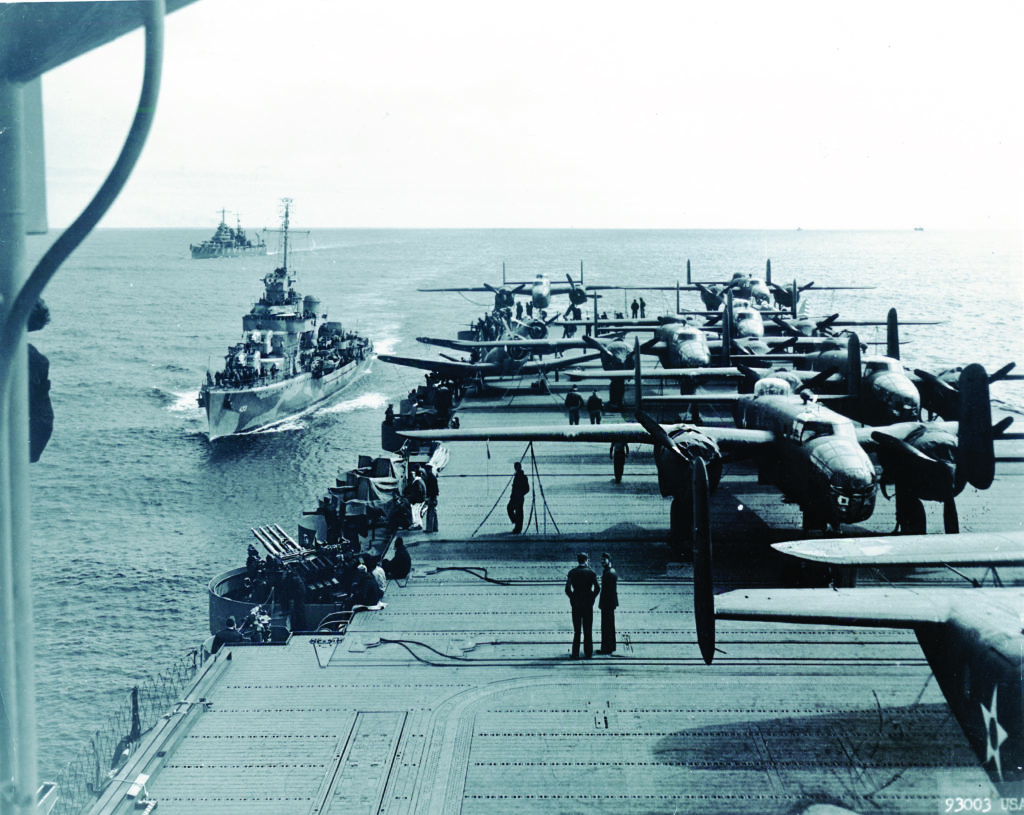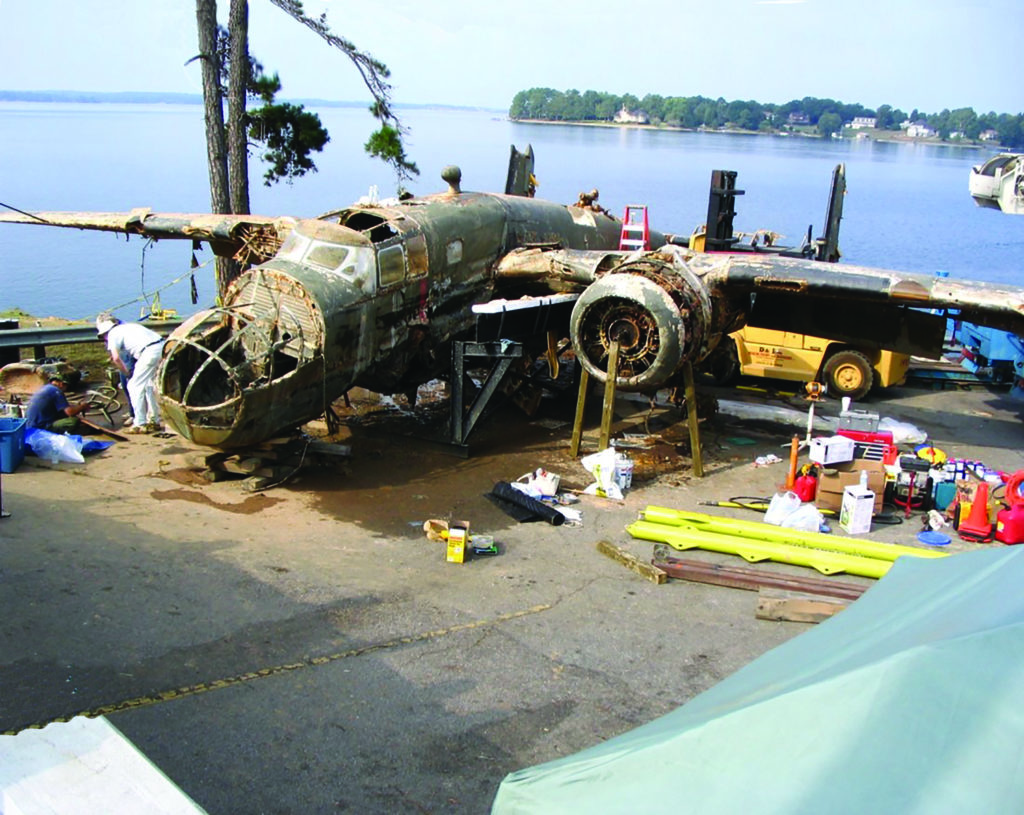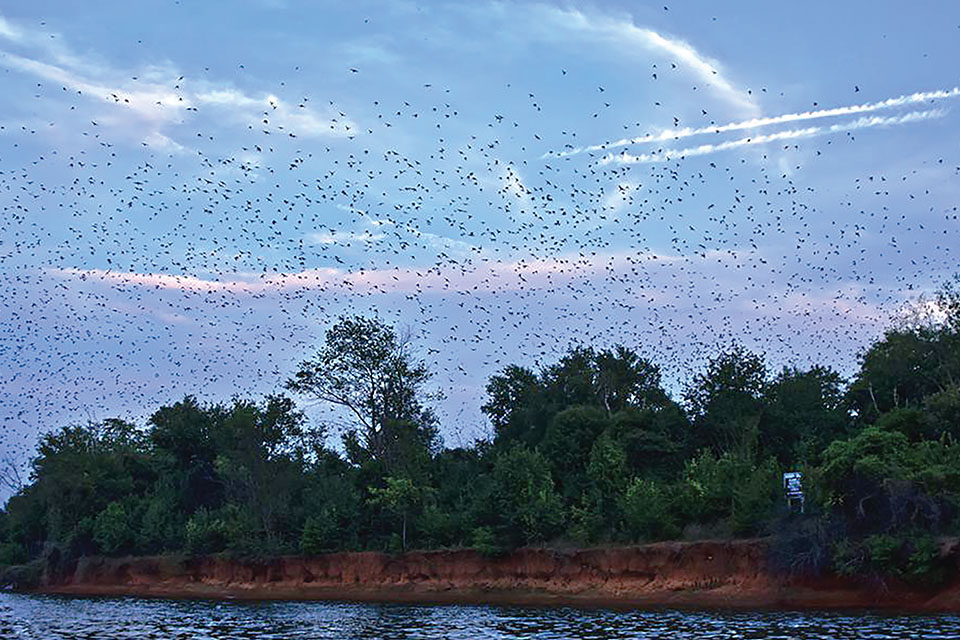As the sky turns lavender-pink at the close of this gorgeous summer day, I spy two birds flitting across Lake Murray’s shimmery waters. Then two more, then eight, and fifteen. Soon the sky is filled with them: purple martins returning to their rookery on 12-acre Doolittle Island (officially named Lunch Island)—one of North America’s largest purple martin sanctuaries, seasonal home to as many as one million birds. More than seven decades ago, the island entertained another kind of bird—silvery sleek B-25s that bombed this terrain as part of a secret training mission during World War II.
Jayne Baker, the public relations manager at Lake Murray Country Tourism Board, hints at a connection between the bombing practice and the fact that the birds are drawn to this island. “It may be that something about bomb dust in the soil attracts the birds,” she said.
I intended to find out, and the first thing I learned is that the story winds all the way back to Pearl Harbor.

The Japanese surprise attack on December 7, 1941, jolted Americans to the core, forcing the U.S. into the war virtually overnight. As Imperial Japan proceeded with its Asian domination strategy, Pacific territories—Guam, Wake, Singapore, the Philippines—fell one by one, and American morale plummeted. In a fireside chat on February 23, 1942, President Franklin D. Roosevelt addressed the state of affairs to an estimated 62 million people:
“Let me say once and for all to the people of the world: We Americans have been compelled to yield ground, but we will regain it. We are daily increasing our strength. Soon, we and not our enemies will have the offensive; we, not they, will win the final battles; and we, not they, will make the final peace.”
Even before Roosevelt’s rallying speech, the U.S. Army Air Forces had initiated plans to take the fight to the Japanese. Three weeks earlier, on February 3, 1942, the 17th Bombardment Group from Pendleton, Oregon, was called to Columbia, South Carolina, where they convened at Columbia Army Air Base (today’s Columbia Metropolitan Airport), the nation’s largest B-25 training facility.
“The conditions were miserable,” explains historian James M. Scott, author of the 2016 Pulitzer Prize-finalist Target Tokyo.“They were sleeping in tents at the airfield, there was lots of mud. One of the airmen, who was from Columbia, stayed at his fraternity house.”
They were there for one reason. The legendary pilot Lieutenant Colonel James H. “Jimmy” Doolittle was seeking volunteers for an “extremely hazardous” top-secret mission. Without knowing any specifics, every single man—80 in total—raised his hand when asked. “There’s nothing stronger than the heart of a volunteer,” Doolittle said. Little did these volunteers know, Doolittle’s audacious, virtually suicidal plan involved launching B-25 bombers—one of the military’s newest planes—off the deck of an aircraft carrier (something that had never been done before), 400 miles off Tokyo’s eastern coast, and proceeding to bomb the enemy capital.
But first they had to practice. While Columbia was essentially a rallying point, some of the pilots used islands within 50,000-acre Lake Murray, about 10 miles northwest of the air base, for target practice.
“Practice bombs were loaded with white sand, so those men could see from the air if they had hit their target on Lake Murray’s red clay or not,” said Lake Murray historian Randall Shealy, who grew up on the lake’s shores and has had the opportunity to meet almost half the Doolittle Raiders in person. “Today,” Shealy added, “the shore on Doolittle Island is covered in white sand.”
He remembers, when he was growing up in the area, seeing bomb fragments scattered over the island and sticking out of the nearby water. “That’s the only place I have seen any,” he said.

In the end, according to historian Scott, the Columbia region wasn’t private enough to practice a top-secret mission. Within just a couple of weeks, the training operation moved to Elgin Field in Florida. By April 1, 1942, the Doolittle Raiders were prepared and, with 16 B-25s secured onto the USS Hornet’s flight deck, they steamed toward Japan. On April 18, the men and their bombers successfully released their revenge-filled bombs at high noon on an unsuspecting Tokyo. In the grand scheme of things, the Doolittle Raid did little material damage to the enemy, but the raid hugely boosted American morale, and it was later learned the attack profoundly affected Japanese high command, forcing them to reconsider their Pacific strategy.
Lake Murray’s contribution is a blip in the war’s history, but one that served a role nonetheless. Even after the raid, B-25 pilots who stayed behind conducted thousands of training missions over the lake between 1942 and 1945. Six of them crashed into its depths, including one on April 4, 1943, that fell to a watery grave of 150 feet, too deep for the U.S. Army Air Forces to salvage. Fast-forward to 1992, when Columbia native Dr. Robert Seigler located its precise location with the help of the U.S. Naval Reserve Sonar Unit. A team of divers and historians finally brought the plane to the surface in 2005, and it now resides at the Southern Museum of Flight in Birmingham, Alabama. Of 130 remaining B-25s, it’s the third oldest, one of only four intact C models surviving, and the only B-25 that still retains its bottom gun turret.
Another errant B-25, nicknamed “Skunkie,” went down in Lake Greenwood, about 25 miles west of Lake Murray, on June 6, 1944. Recovered in 1983, it served as the centerpiece of several anniversary reunions of the famous Raiders and is now housed in a hangar at Jim Hamilton—L. B. Owens Airport in downtown Columbia.

Today, you can learn about B-25 and Doolittle history at the Lake Murray Country Visitor Center on North Lake Drive, which has a small museum with interesting displays, including a shotgun shell-filled practice bomb. And a lone historical sign on Doolittle Island, marking the Raider’s target-practicing history, can be viewed when the birds aren’t there—visitors to the island are prohibited during the summer roosting months.
So, what about the birds?
Purple martins, North America’s largest swallows, first began arriving on Doolittle Island in the early 1980s. By 1994, the feathery visitors numbered in the hundreds of thousands and have returned every year except one (for unknown reasons, they failed to show in 2014). The morning departure is so dense, as they leave all at once, that the massive swarm gets picked up on the airport radar. Shealy noted, “During the day, they fly as far as North Carolina, Alabama, and Georgia looking for something to eat.”
Purple martins feed on insects. When they spot their prey, they turn sideways or upwards, speed up, and flare their tails as they swoop and dive and skim the water surface in a great show of aerobatics.
The birds spend July and August at Lake Murray, drawing crowds of spectators. You can only access the spectacle by boat, which makes for a lovely evening of bird-watching, sipping cocktails as the sun sets over the waters. (Or you could come in the morning for sunrise to watch the birds depart en masse.)
I asked Tara Dodge from the Purple Martin Conservation Association if there might be any connection between the purple martin phenomenon and Doolittle’s practice bombings.
“Whether or not the bombing in the ’40s changed the topography enough to draw the martins to the site we cannot say for sure,” she said. “We have no record of them being there before, or if the vegetation changed.”
She went on to say that the birds are most likely attracted to the island itself—the fact that it’s safe from ground predators and, for the most part, free of people. “They roost in the cattails, they roost on the tall trees,” Dodge added, “It’s really a prime spot for martins.”
That said, the conservationist admitted there’s still much to learn about bird roosts and why martins choose rookeries in one particular area over another.
No matter. Doolittle Island’s purple martins help remind Lake Murray’s many visitors that the road leading to America’s audacious first strike back in World War II came through this idyllic corner of South Carolina.✯
WHEN YOU GO
Lake Murray, about 15 miles northwest of Columbia, South Carolina, is a major recreational destination. Fly into Columbia Metropolitan Airport, the same airport from which Doolittle conducted his operations. There are plenty of marinas and landings to place your boat into the lake. If you don’t have a boat, a number of outfitters would be happy to rent you one, including Better Boating Rental (lakemurrayboating.com). You could also take a cruise with Spirit of Lake Murray (lakemurraycruises.com/ purple-martins), which offers public cruises as well as private charters. Tickets sell out fast, so be sure to plan ahead.
WHERE TO STAY AND EAT
There are no hotels on Lake Murray. Most visitors rent houses from property managers; try Lake Murray Vacation Rentals (lakemurray-vacation.com). Columbia, a half-hour drive away, offers a wide selection of accommodations—Aloft Columbia [Downtown] (marriott.com) and Hotel Trundle (hoteltrundle.com) are good choices near Columbia’s Main Street neighborhood. Lake Murray has a number of good waterfront restaurants, including Liberty Tap Room and Grill (libertytaproom.com), located near the launching point for cruises. Try the house specialty shrimp and grits.
WHAT ELSE TO SEE AND DO
Along with boating, water skiing, and swimming, Lake Murray hosts several fishing tournaments, including October’s Big Bass Classic (bigbasstour.com).





